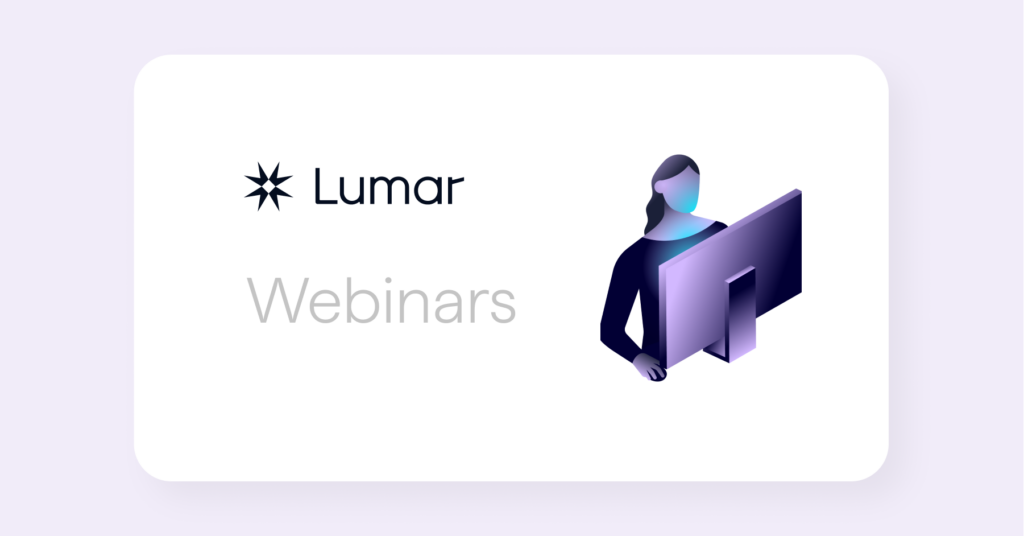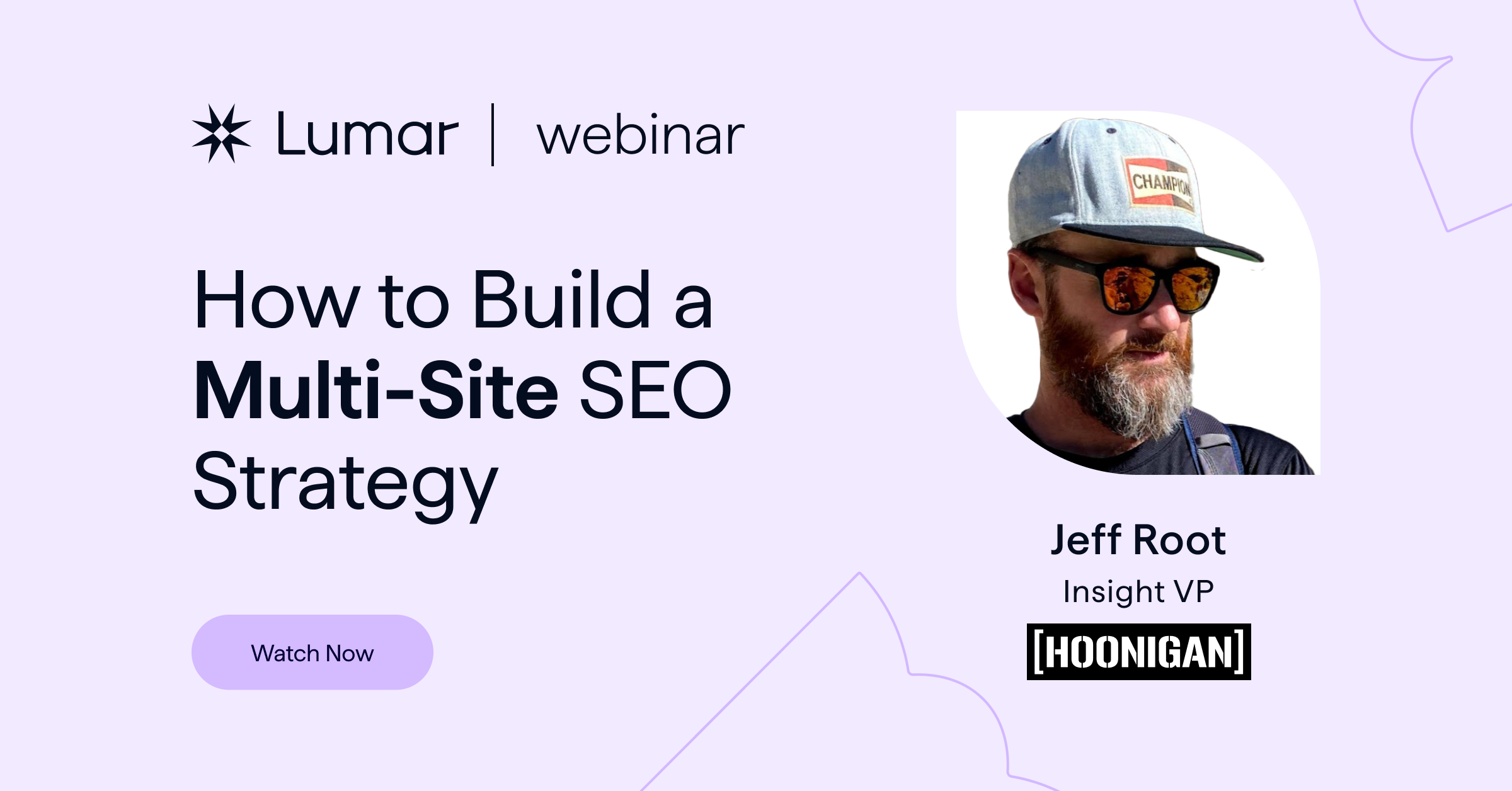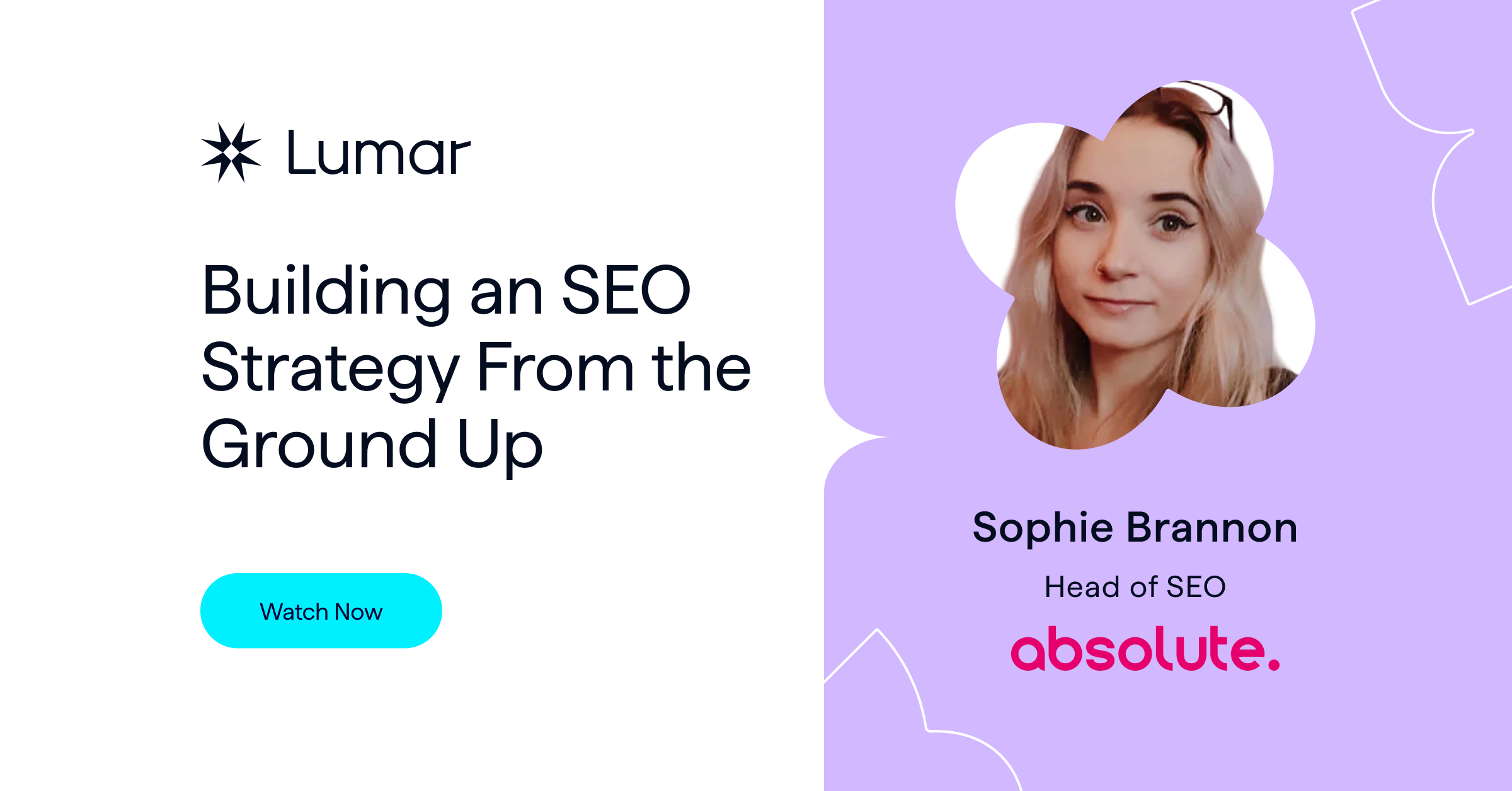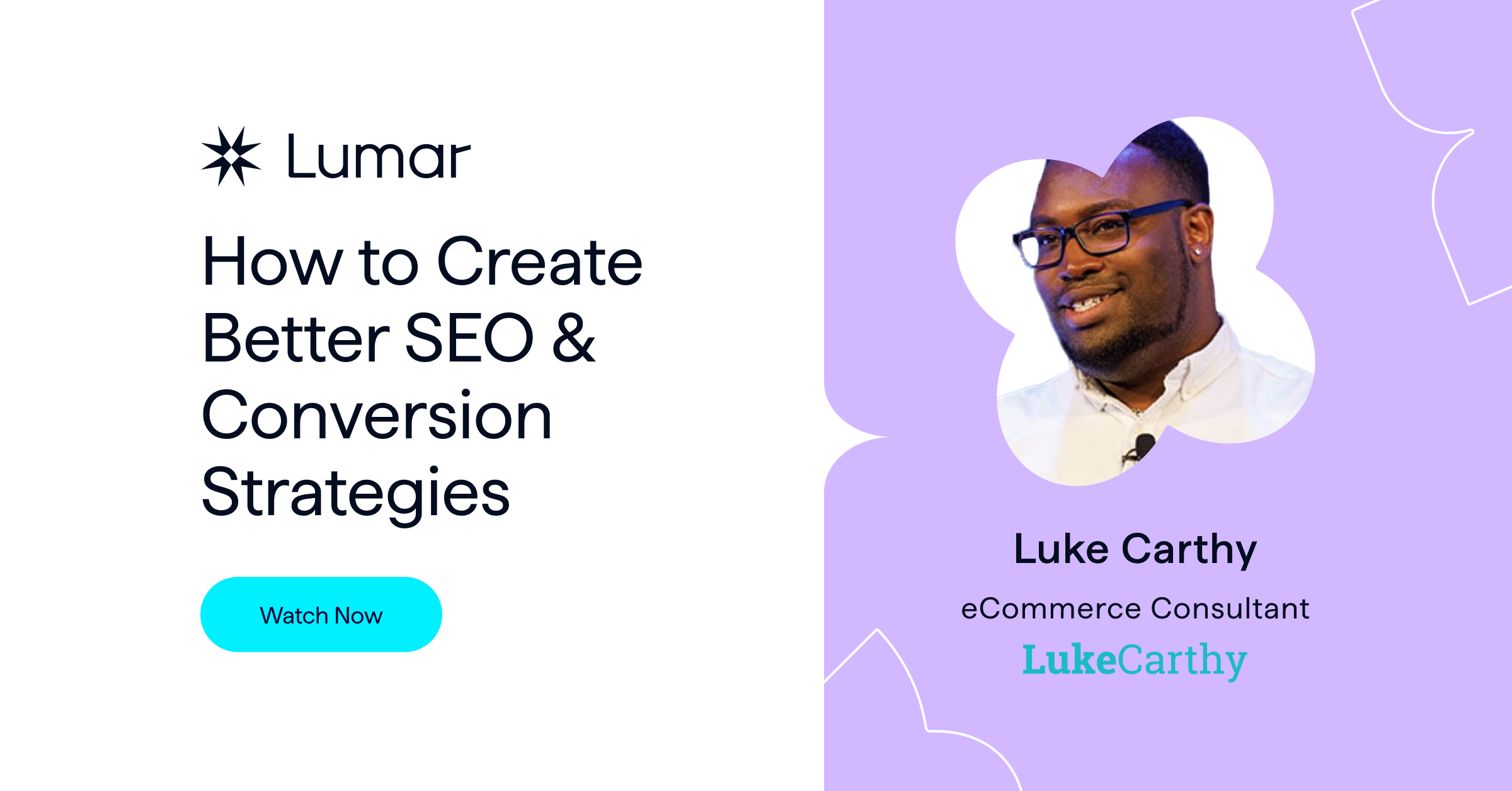For this month’s DeepCrawl webinar we were joined by Izzi Smith, SEO Manager at Sixt and DeepCrawl’s CAB Chairman, Jon Myers. In her presentation, Izzi told us about the rise of zero-click searches, featured snippets and the importance of structured data. While many SEOs see zero-click searches as a threat to their organic traffic, Izzi shared how she has turned new in-SERP features into opportunities for SIXT.
We’d like to say a big thank you to Izzi for her great presentation and for answering our audience’s questions, as well as to Jon for hosting and all those who attended. We hope you enjoyed the webinar!
You can watch the full recording here:
Here are the slides that Izzi presented:
What are zero-click searches?
Zero-click searches are when either a searcher is satisfied directly on the SERP by Google or a publisher, or when a searcher is dissatisfied by the results and amends their query or exits Google.
Zero-click searches commonly occur when Google provides quick answers, data embeds or featured snippets directly in the SERPs e.g. weather forecasts, or factual information like ‘why are flamingos pink?’. Pages with these in-SERP features commonly don’t result in a click through to a website from the search results because the user’s intent has already been satisfied.
While Google’s in-SERP features often provide a better user experience by saving the searcher time, this means websites can see decreases in click-through rates (CTR) and traffic from organic search.
Research by SparkToro found that 62% of mobile searches and 34% of desktop searches resulted in no clicks in September 2018. You can find out more about this research in our recap of Rand Fishkin’s BrightonSEO talk from last year.
Why are SERPs so feature-heavy?
Google’s search results are becoming more feature-heavy because Google is moving away from being a search engine and is evolving into an answer engine with increasingly rich information being provided directly in the search results.
In-SERP features will vary depending on how Google understands the query:
- An informational query might return a featured snippet with a direct factual answer e.g. ‘Who is the Queen of England?’
- A query about a trending topic might return a Top Stories box with fresh articles published recently e.g. ‘brexit’.
- A research question might have transactional intent triggering ads as well as an informative featured snippet e.g. ‘What is the best shampoo for red hair?’
Turning zero-click searches into opportunities
Rather than seeing zero-click searches as a threat, Izzi firmly believes that we should stop being afraid of them and turn them into opportunities.
Izzi highlighted the following key opportunities for taking advantage of zero-click searches:
- Understand more about user intent from SERP features.
- Use achievable prominent SERP features to outrank competitors.
- Build up brand awareness by creating a well-connected entity within the Knowledge Graph.
- Bring more focused and meaningful traffic to your site.
However, we need to be mindful of the unique problems that need to be addressed with zero-click searches for enterprise companies, which include:
- Communicating traffic and CTR loss to stakeholders.
- Satisfying multiple user intents across large scale websites.
- A high volume of pages to analyse and assess.
- Obtaining development resources for implementing improvements.
How to win with zero-click searches
Harvesting searcher intent at scale
On a large scale it can be difficult to understand user intent for a high volume of pages. Izzi recommends using a rank tracking tool like Searchmetrics which shows you the SERP features and intent on a query-level basis.
Deprioritise unsustainable queries
It can be tempting to focus on ranking for short tail head terms that could potentially drive a lot of traffic, but often it isn’t realistic as these often contain a large number of in-SERP features where you have little chance of winning. Instead, it might be a better strategy to optimise for mid to long tail queries.
Izzi recommends avoiding optimising for queries with pure answer intent, as these are the most likely to have user intent fully satisfied in the search results e.g. ‘UK population’.
Stand out with rich results
Focus on optimising your pages to feature in more rich snippets in SERPs so that you stand out amongst your competitors. Even if you don’t rank as highly as your competitors, you can still win the click if you have a more appealing and relevant result with rich snippets or by taking up more SERP real estate.
Not only will you be more likely to win the click with more rich results displaying for your pages in search, but they are likely to drive more meaningful clicks as you’re driving visitors that really want to be on your site. Rich results now include recipe, article, product, Q&A, FAQs and how-to formats.
Izzi ran analysis on SIXT.co.uk and found that the CTR was 85% higher for results with a rich snippet compared to those without. Not only were the CTRs higher for rich snippets, but engagement was better with lower bounce rates, a higher time on site and higher conversion rates.
Gaining rich results with structured data
To achieve rich results in Google search we need to make use of structured data and schema.org. Izzi shared some rules to stick by when implementing structured data on an enterprise site:
- Play by the rules or else Google may penalise the domain if they deem that structured data is being misused to manipulate the SERPs.
- Always test whether it is worth going after rich results. Don’t roll out structured data across a whole site to begin with because it might be a waste of time. Don’t implement structured data just because you can.
- Never mark up content that isn’t on the page or be misleading with it.
- Don’t mark up content that is dynamically injected or hidden by onclick events.
- Use the most specific type of structured data available.
- Always validate code using the Structured Data Testing Tool or Rich Results test.
For the implementation of structured data, Izzi recommends using JSON-LD syntax because it’s easy to use, future proof and recommended by Google.
At SIXT, Izzi has worked with developers to integrate the implementation of JSON-LD with their own CMS plugin. This allows Izzi to copy and paste the JSON-LD directly into their CMS without requiring developer input. They have an additional level of error checking with the plugin to give the developers peace of mind that incorrect code won’t be added, to prevent anything on the page from breaking.
For websites with a lot of static content, it is possible to create markup in bulk. This can be done by finding the data you want to extract and creating the regex to pull it. You can then create a custom extraction using DeepCrawl for each data point, run a crawl and export it as a CSV ready to be marked up. You can read more about this in our guide to getting the most out of DeepCrawl with Custom Extractions.
Enriching entities
Search engines need help in understanding connections between entities. That’s why we have schema.org to provide machine-readable information to help connect entities and provide context.
You need to feed the Knowledge Graph in your favour by optimising your company’s knowledge panels. If Google is going to steal your data, make sure they steal the right data. Make sure that local knowledge panels have the correct information by updating your Google MyBusiness listings and make sure your brand is appearing for entity featured snippets and quick answers related to your company.
The key here is aligning data related to your entity or brand. You can do this through:
- Providing accurate information in Wikipedia listings.
- Claiming knowledge panels.
- Ensuring consistent use of information across social media profiles.
- Using a square logo.
- Implementing organisation schema.
- Using consistent brand naming conventions.
By taking control of how your associated entities are displayed, you can get the good kind of zero-click SERPs where users are satisfied with an immediate answer rather than a quick site visit.
Plus, if you don’t provide Google with this data then you risk being left out in SERPs and giving a big advantage to your competitors, such as the ones that appear in the associated entity carousel below.
Key Zero-click Search Opportunities
Izzi finished off by summarising her key opportunities for taking advantage of zero-click search results:
- Understand what Google considers the searcher intent to be and use that in your favour.
- Understand what the user is looking for and provide engaging and satisfying results.
- Avoid wasting your time optimising for unsustainable queries when the mid or long tail queries are likely to be much more lucrative.
- Build up strong connected entities and use structured data to your benefit.
- Win more meaningful visits with rich results and enhanced snippets.
- Build featured snippets that achieve a goal, such as conversions, brand or voice results.
- Communicate the importance of SERP enrichment to garner more support internally.
- Scale proven winning efforts across your site.
Start Your Journey With DeepCrawl
To learn more about how DeepCrawl can help with enriching pages in search by crawling and extracting structured data, then take a look at our guide on the topic. You can also try us out for yourself.



